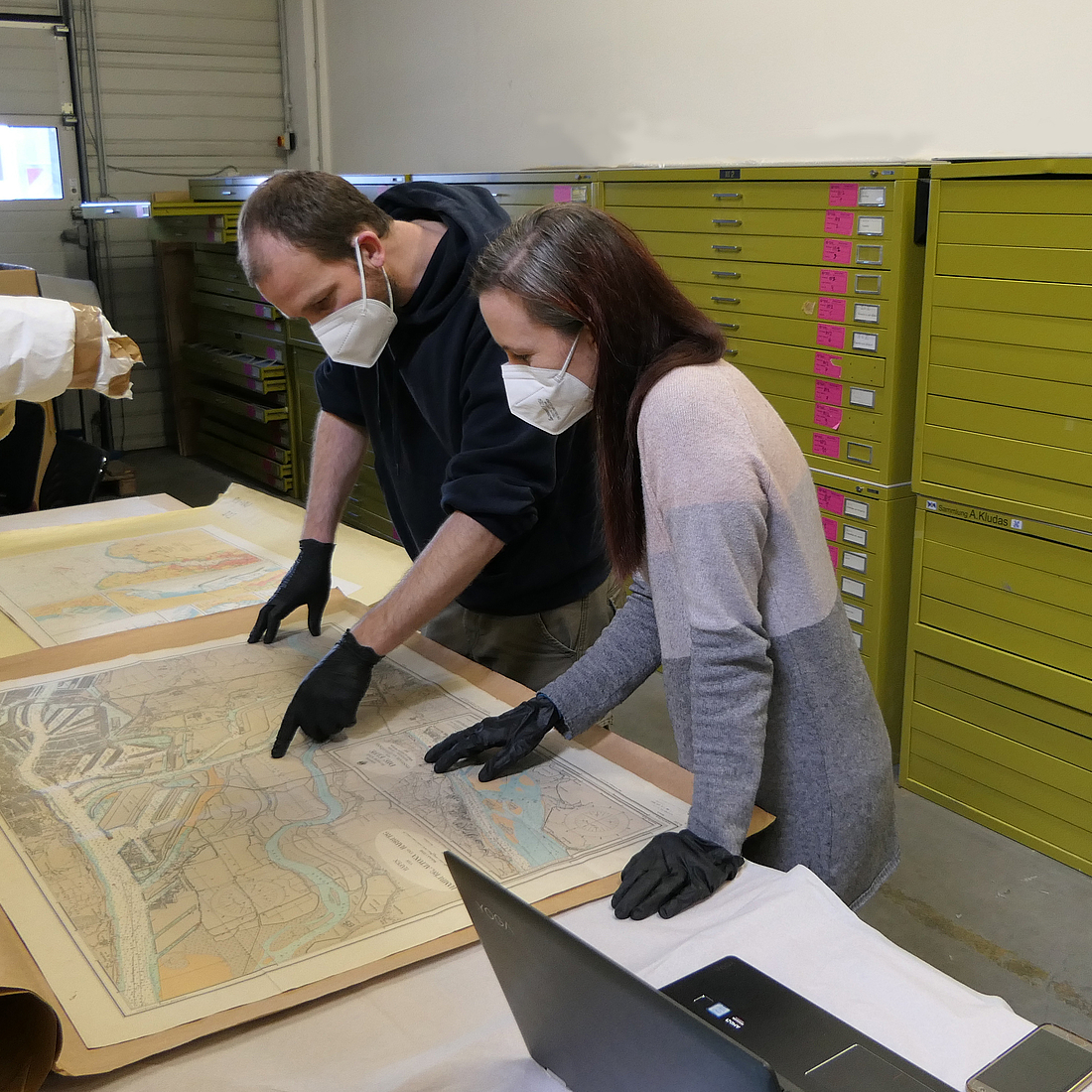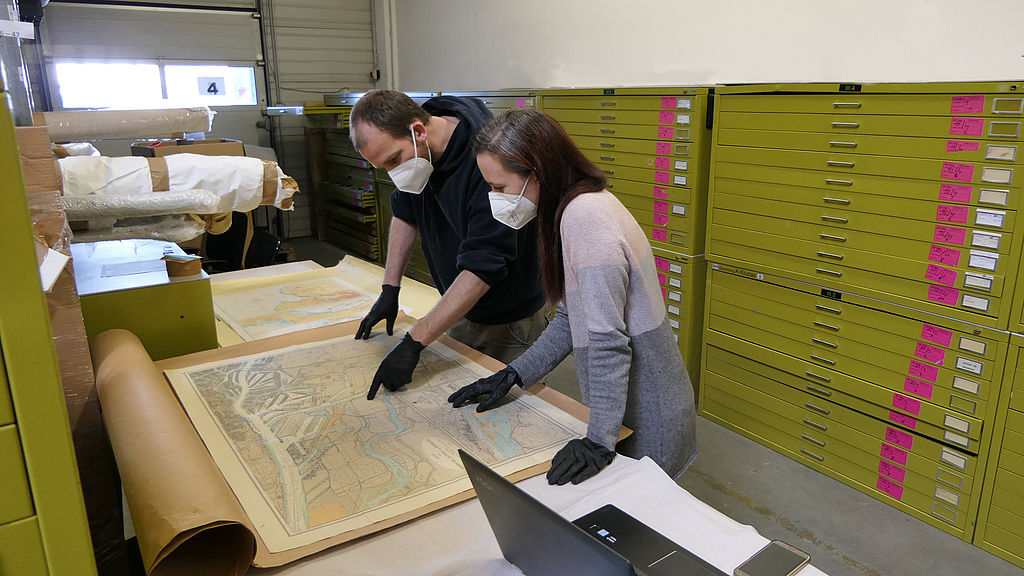Research and wreck selection
Two world wars left the North Sea bed littered with military and civilian shipwrecks. Dramatic battles and tragic sinkings, however, were often followed by gradual neglect. More than 70 years on from the end of the Second World War and more than 100 years after the end of the first, the remains of those wrecks are becoming ever harder to recognise. Even well-known shipwrecks are not easy to identify, while the identity of newly discovered wrecks is often unclear.
If the wreck is sufficiently well preserved, it may be possible to identify the vessel’s construction type, its usage and sometimes even its name. The state of a wreck, however, depends greatly on the wreck’s age, the circumstances of its sinking and the conditions on the seabed. Often details such as individual munitions and weapons finds, number of propellers, hull shape and wreck size can, therefore, provide initial clues as to the type of vessel and its possible military use.
If the wreck is established to be a former warship, it can potentially be identified through research in archives and specialist literature. During the wars, military operations such as naval battles, reconnaissance missions, mine laying and ship positions were recorded in detail in war diariesand battle reports. Even the volume of weaponry and type of munitions used can often be deduced. Where ships were sunk, the search can thus often be narrowed down. It doesn’t necessarily follow that a sinking can then be correctly matched to a wreck, however; such research merely provides a set of clues.
For the North Sea Wrecks project, it was therefore decided to focus on previously identified wrecks where position and state are already known. Due to constraints such as the limited time available during research expeditions, it is unfortunately not possible for the project team to match other lost vessels to potential new wreck sites.
The aim of the project’s research in archives and literature, therefore, is not to identify possible new wreck sites, but to establish the circumstances in which known wrecks went down and to estimate the quantity of munitions that might still be onboard each wreck.
(For more on the wrecks investigated for the project, see Station 9, Research Cruises section.)
In addition to carrying out historical research, the project’s researchers also investigated each chosen wreck’s subsequent history on the seabed. Detonations and clearances of wreck sites and their munitions were not uncommon after World War Two and, in particularly dangerous situations, are still carried out today. Unfortunately, there also continue to be frequent instancesof artillery and other items being removed from wrecks by hobby divers.
All of these factors inform our decisions on which specific wrecks to investigate as part of the project.
Partner
-


